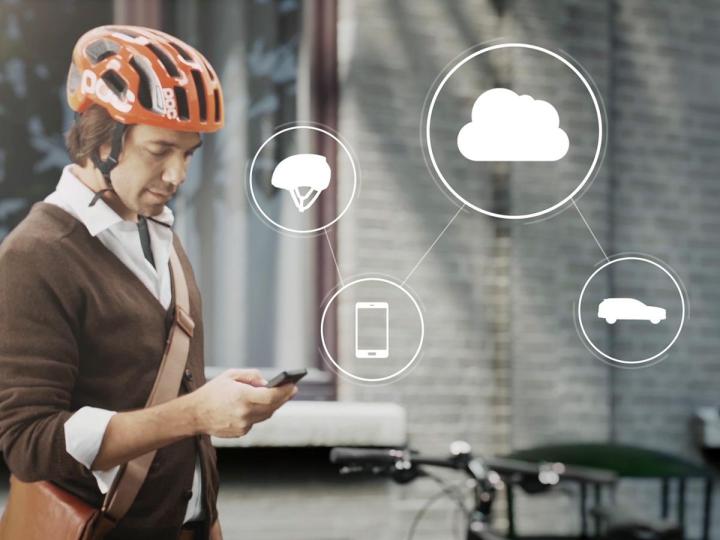
The helmet works with a third-party smartphone app (such as the already popular Strava) to constantly report the cyclists position back to the cloud. Volvo cars fitted with the right technology can then display smart alerts whenever there’s a cyclist in the vicinity and vice versa — imagine your helmet flashing red if a car is about to cross your path at the next junction.
It’s only a concept idea at this stage and there’s still work to be done — a constant connection to the Web is required by both cars and bicycles — but the invention shows promise and could eventually help cut down the number of accidents happening on the road. The kit will be demoed further at the CES conference in Las Vegas in January.
“If an imminent collision is calculated, both road users will be warned — and enabled to take the necessary action to avoid a potential accident,” says Volvo. “The Volvo driver will be alerted to a cyclist nearby through a heads-up display alert — even if he happens to be in a blind spot, e.g. behind a bend or another vehicle or hardly visible during night time. The cyclist will be warned via a helmet-mounted alert light.”
There are plenty of companies already looking to innovate in the field of bicycle helmet safety. The ICEdot crash sensor can automatically alert the emergency services and friends and family if you’re involved in a collision, for example, while the MindRider helmet uses brain-scanning technology to help work out the safest and most stress-free routes in any city. Anything that can help reduce that 50,000 figure we mentioned at the start has to be a step in the right direction.


